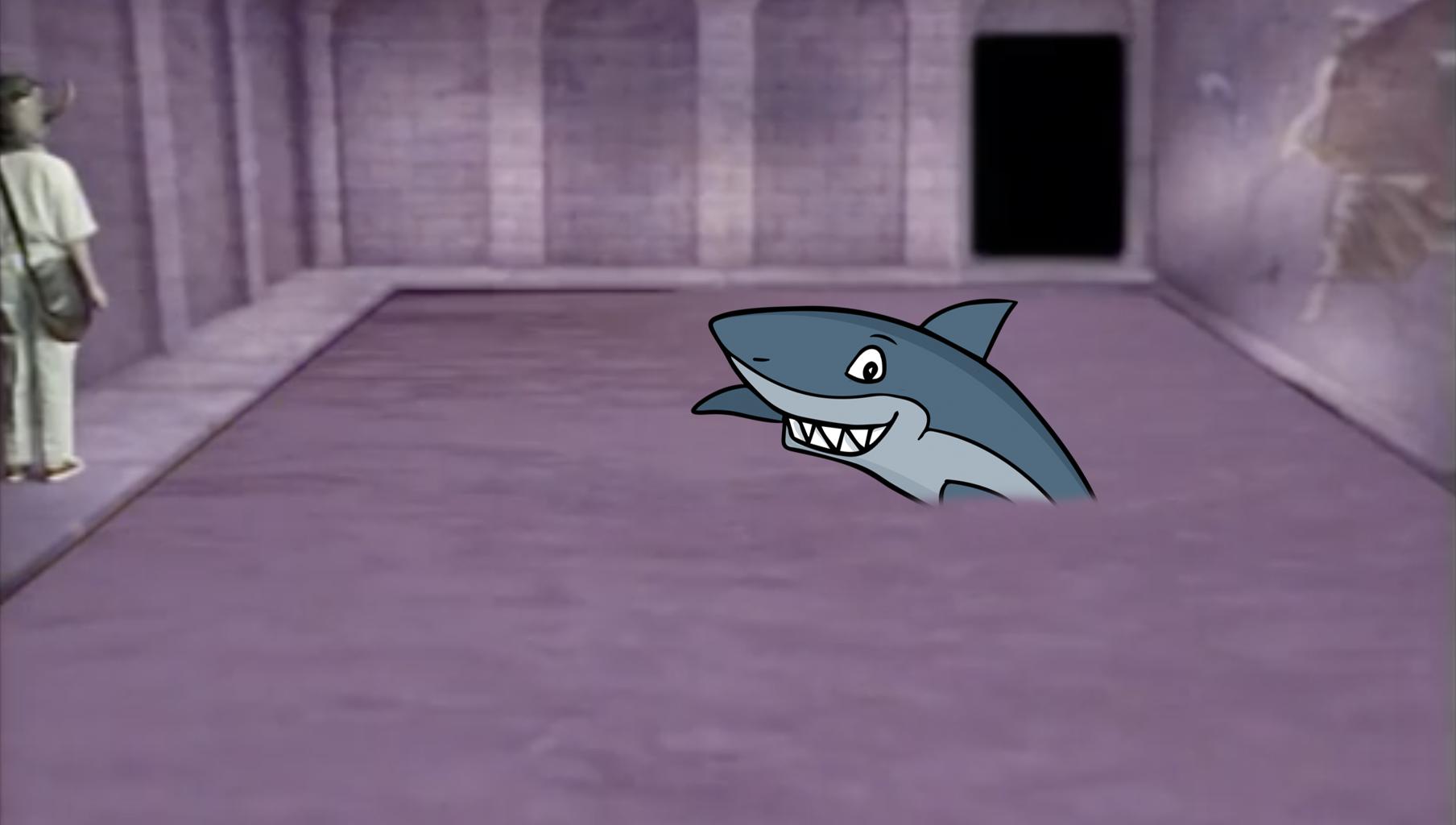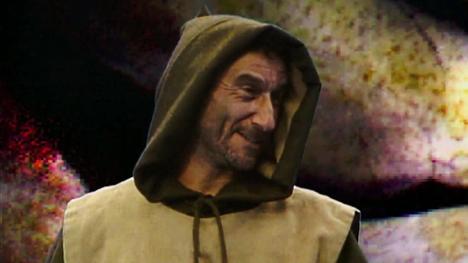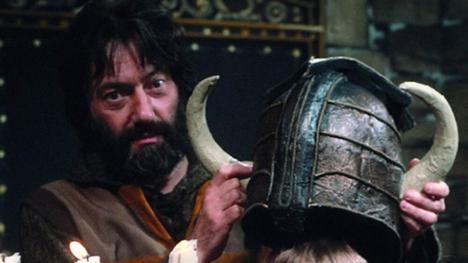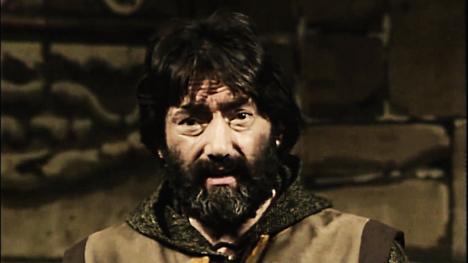Many feel Knightmare's early series are the best. Chris Ballard tries to pinpoint when it began losing its sparkle.
In this increasingly critical world it has become popular to talk about TV programmes 'jumping the shark', i.e. the moment they can be said to have passed their peak, never again to attain the heights of their previous quality or success. (The phrase refers to an episode of Happy Days in which the Fonz jumps over a shark whilst water-skiing; a jarring slapstick moment which supposedly marked the start of the show's decline). Programmes do not necessarily become terrible the moment they jump the shark and may in fact remain brilliant for years afterwards. But the point is they are past their very best.
So when did Knightmare jump the shark?
For me, it happens approximately 13 minutes into the first episode of Series 4. The dungeoneer, Helen, picks up a shield emblazoned with an eye and slots it on to her arm. As she walks towards the chamber door Treguard tells her to "hold it up to your chest". The programme then cuts to a VT showing Helen's progress through the door from a first person perspective... and then... Helen is outside the dungeon and we are watching shaky camera footage of a forest trail.
Ladies and gentlemen, Knightmare has jumped the shark.
Given that so many fans disliked the eyeshield, you may have seen that one coming. But what was it about the object that - not derailed, that's far too strong a word - diminished the show? Here are a few personal thoughts.
Not that I analysed it when I was an eight-year-old Knightmare fan, but part of the show's appeal was undoubtedly the fact it was based in a deep, dark dungeon. The whole point of the show was that teams took on the challenge of Knightmare Castle - a challenge thrown down by the dungeon master Treguard. The way I saw it, the dungeoneer entered the castle dungeon in the antechamber and then that was it - no more daylight until victory or death. The only way was not only forward, but downward, towards increasingly hazardous traps and bigger, nastier monsters. The stunning animated title sequence - in which a knight on horseback wound up and up a lone mountain to the castle at the summit - reinforced this notion. In my little boy's brain, the inside of the mountain was the dungeon and only a successful quest would find the exit at the bottom (I guess I was quite a logical child!).
In short, Knightmare was a game to be played in the shadows, in the cold, in the damp. In the knight-time, if you will. "Can you beat the challenge?" ran Knightmare's tagline, and the thrown gauntlet related to the dungeon.
The eyeshield transformed this dungeon aesthetic radically and irrevocably. Quests now passed through forests, villages and a number of different castles. There now tended to be "locations" rather than "rooms". This is an important distinction - a room in the dungeon was a specific obstacle within four walls, a discrete and deadly trap. A location was just a place where stuff sometimes happened. For my money, the block and tackle - a new room - was the best thing about Series 4. But most of the new locations were now, in line with the eyeshield's real-world agenda, no longer exotic and imaginative settings but actual castles. It was difficult to get excited about Dunswater when you recognised it as the place where Aunty Linda and Uncle Keith got married.
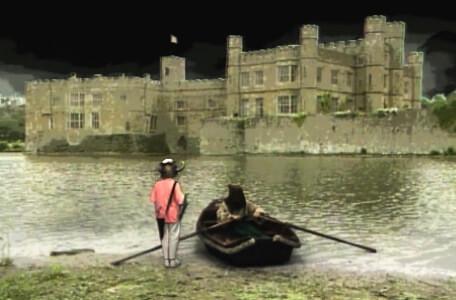
When watching Knightmare I could now see the sky. The atmosphere of claustrophobia and isolation was gone. Crucially, I no longer felt scared - a theoretical escape always seemed too easy in the fresh, open air.
Putting atmosphere aside, I suppose there was a certain interest in seeing the eyeshield's first glimpse of a new location. First being the operative word though, because all too often the same footage would be repeated again and again for each subsequent team who made it to that point in their quest. The nine-year-old me found this rather boring. A big part of the fun of Knightmare was not knowing what lay through the next door and the thrill of seeing a new room. The eyeshield made most quests too formulaic and predictable.
Pacing also became a huge issue as some of the eyeshield sequences were pretty lengthy. Chunks of episodes were now devoted to this first person trudging and it could seem like forever until the next exciting encounter. What was wrong with a good old-fashioned magic door?
It is of course simplistic to reduce the evolution of a long-running series to a single 'jump the shark' moment. Although many of the issues discussed here plagued Knightmare to a greater or lesser extent until the end of the final series, in general it remained superb television. However, the introduction of the eyeshield was such a paradigm shift in the nature of the production that, for this fan at least, there will always be two distinct phases of the programme: Knightmare pre-eyeshield and Knightmare post-eyeshield; the former breath-takingly fantastic, the latter merely excellent. I'm glad that Challenge TV is about to start showing the first two series. Both old fans and Knightmare knewbies alike deserve to see the show at its dungeon crawling best.
Do you agree with Chris about the impact of the eyeshield? Did Knightmare ever jump the shark for you? Why not write your own article about this or join the discussion on our forum? One response has been made: When Knightmare Jumped the Shark II.
